Abstract
Diffusion of inorganic carbon into isolated bundle sheath cells from a variety of C4 species was characterized by coupling inward diffusion of CO2 to photosynthetic carbon assimilation. The average permeability coefficient for CO2 (PCO2) for five representatives from the three decarboxylation types was approximately 20 micromoles per minute per milligram chlorophyll per millimolar, on a leaf chlorophyll basis. The average value for the NAD-ME species Panicum miliaceum (10 determinations) was 26 with a standard deviation of 6 micromoles per minute per milligram chlorophyll per millimolar, on a leaf chlorophyll basis. A PCO2 of at least 500 micromoles per minute per milligram chlorophyll per millimolar was determined for cells isolated from the C3 plant Xanthium strumarium. It is concluded that bundle sheath cells are one to two orders of magnitude less permeable to CO2 than C3 photosynthetic cells. These data also suggest that CO2 diffusion in bundle sheath cells may be made up of two components, one involving an apoplastic path and the other a symplastic (plasmodesmatal) path, each contributing approximately equally.
Full text
PDF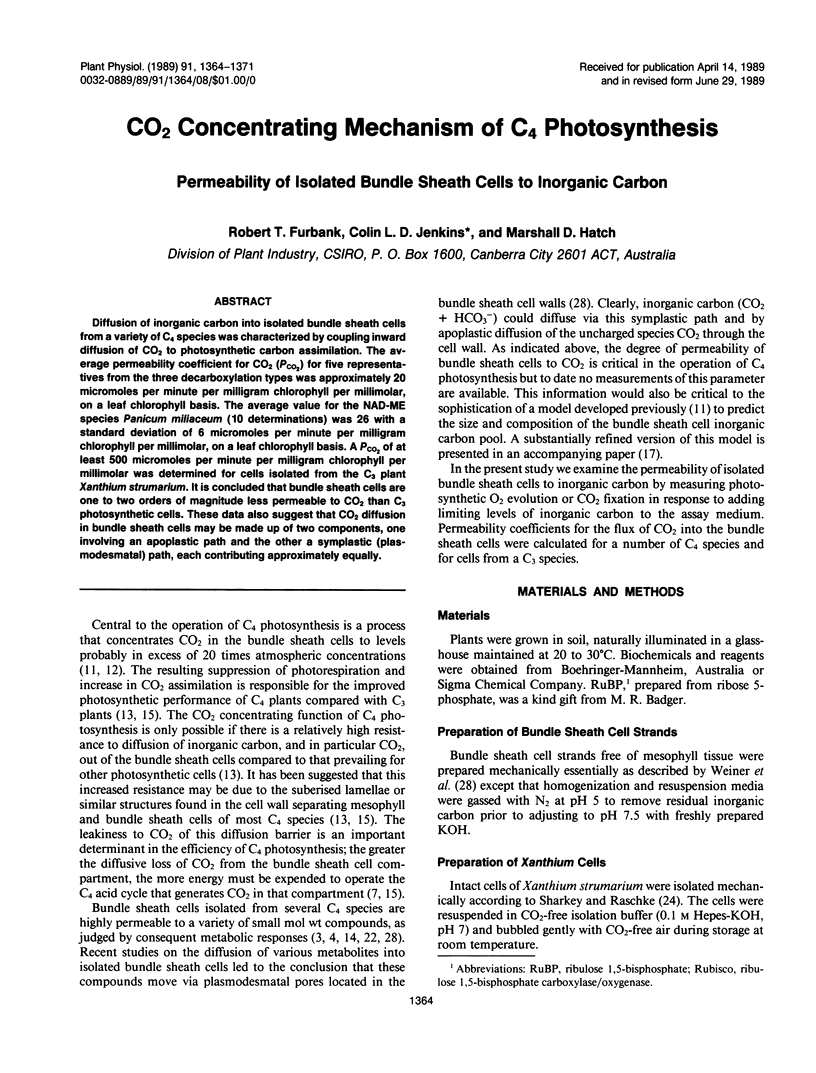
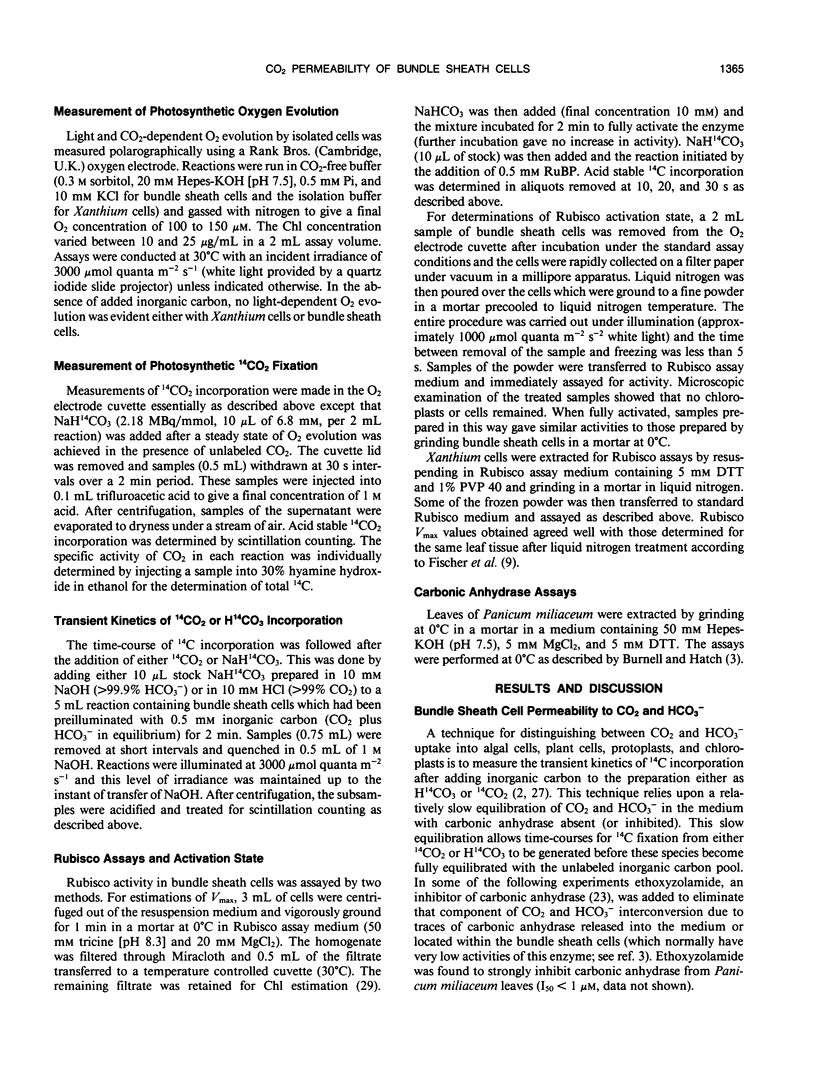

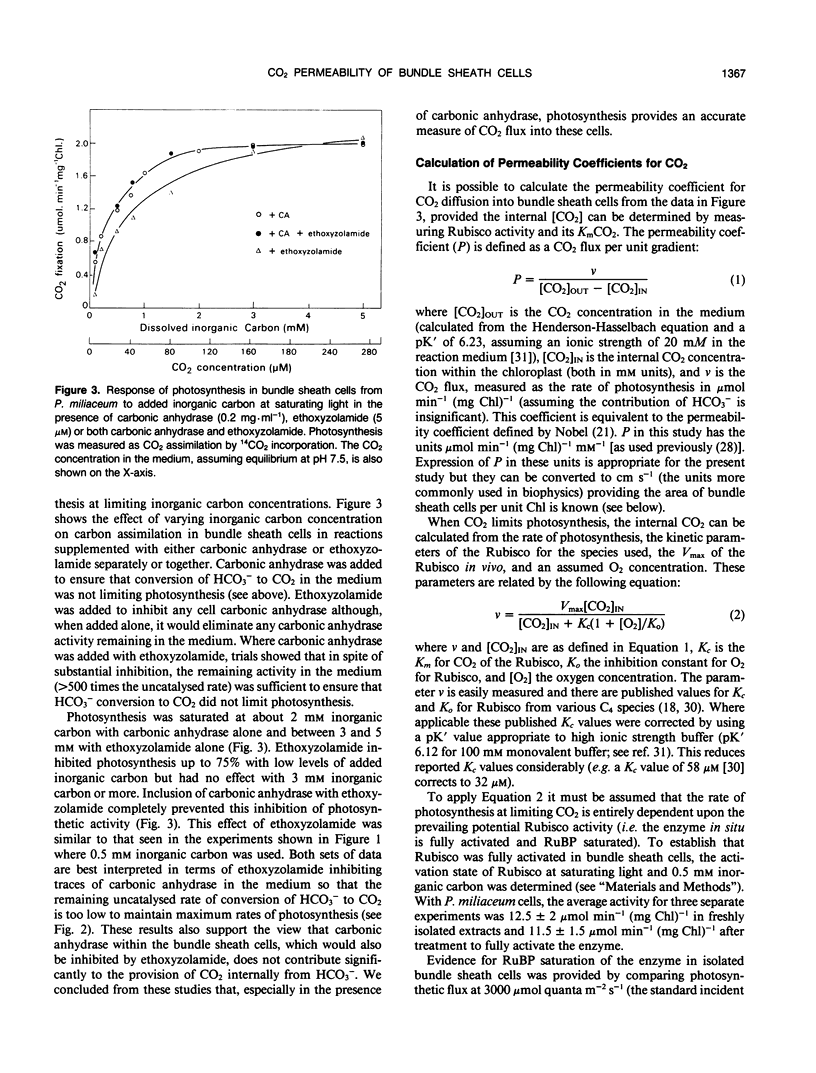
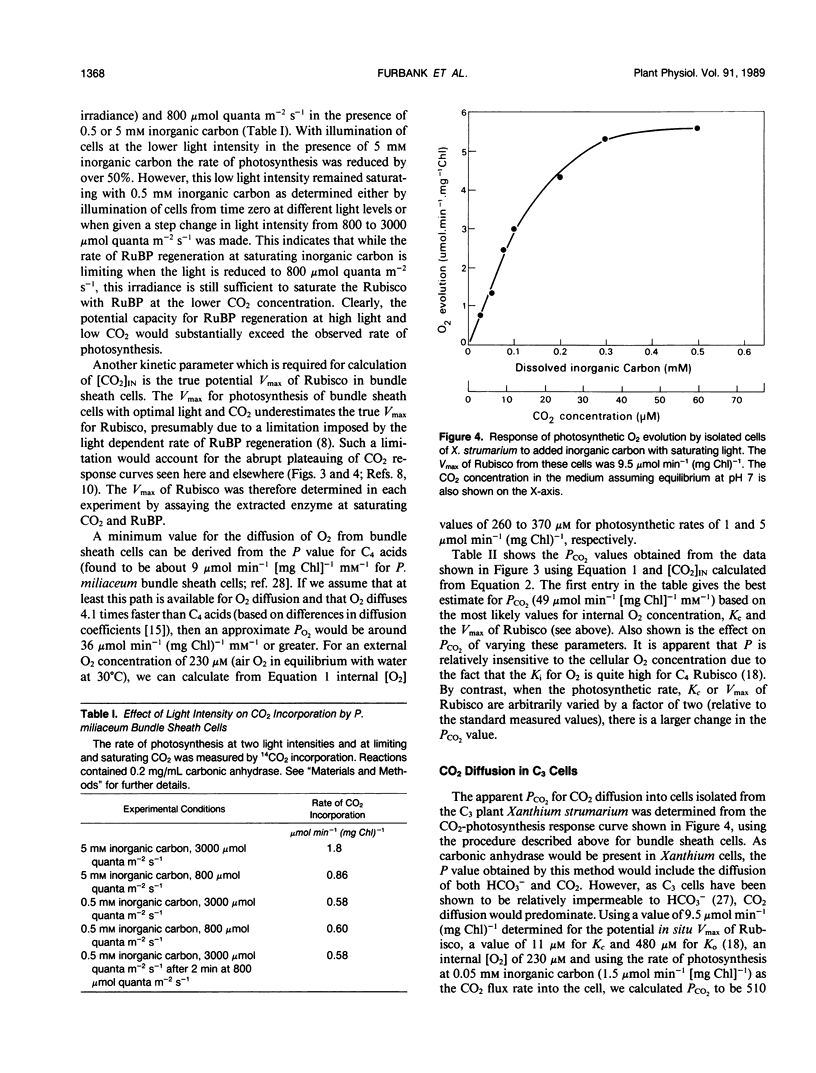

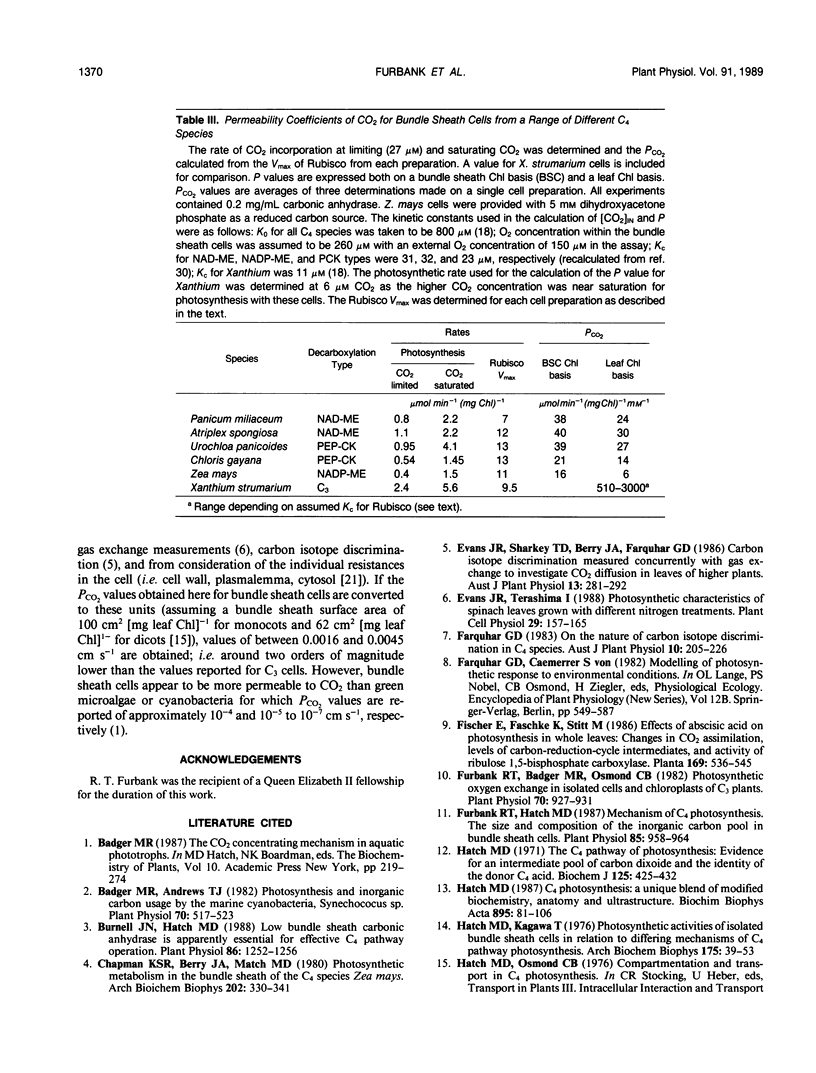
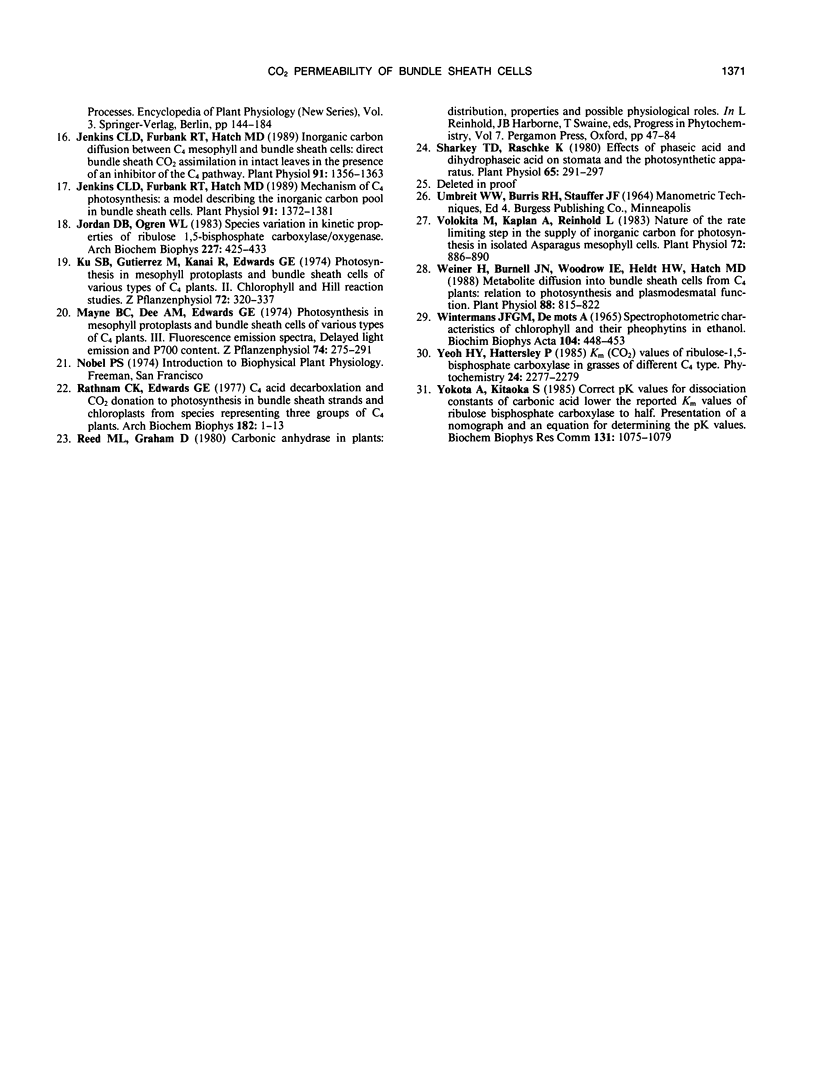
Selected References
These references are in PubMed. This may not be the complete list of references from this article.
- Badger M. R., Andrews T. J. Photosynthesis and Inorganic Carbon Usage by the Marine Cyanobacterium, Synechococcus sp. Plant Physiol. 1982 Aug;70(2):517–523. doi: 10.1104/pp.70.2.517. [DOI] [PMC free article] [PubMed] [Google Scholar]
- Burnell J. N., Hatch M. D. Low bundle sheath carbonic anhydrase is apparently essential for effective c(4) pathway operation. Plant Physiol. 1988 Apr;86(4):1252–1256. doi: 10.1104/pp.86.4.1252. [DOI] [PMC free article] [PubMed] [Google Scholar]
- Chapman K. S., Berry J. A., Hatch M. D. Photosynthetic metabolism in bundle sheath cells of the C4 species Zea mays: Sources of ATP and NADPH and the contribution of photosystem II. Arch Biochem Biophys. 1980 Jul;202(2):330–341. doi: 10.1016/0003-9861(80)90435-x. [DOI] [PubMed] [Google Scholar]
- Furbank R. T., Badger M. R., Osmond C. B. Photosynthetic oxygen exchange in isolated cells and chloroplasts of c(3) plants. Plant Physiol. 1982 Oct;70(4):927–931. doi: 10.1104/pp.70.4.927. [DOI] [PMC free article] [PubMed] [Google Scholar]
- Furbank R. T., Hatch M. D. Mechanism of c(4) photosynthesis: the size and composition of the inorganic carbon pool in bundle sheath cells. Plant Physiol. 1987 Dec;85(4):958–964. doi: 10.1104/pp.85.4.958. [DOI] [PMC free article] [PubMed] [Google Scholar]
- Hatch M. D., Kagawa T. Photosynthetic activities of isolated bundle sheath cells in relation to differing mechanisms of C-4 pathway photosynthesis. Arch Biochem Biophys. 1976 Jul;175(1):39–53. doi: 10.1016/0003-9861(76)90483-5. [DOI] [PubMed] [Google Scholar]
- Hatch M. D. The C 4 -pathway of photosynthesis. Evidence for an intermediate pool of carbon dioxide and the identity of the donor C 4 -dicarboxylic acid. Biochem J. 1971 Nov;125(2):425–432. doi: 10.1042/bj1250425. [DOI] [PMC free article] [PubMed] [Google Scholar]
- Jenkins C. L., Furbank R. T., Hatch M. D. Inorganic Carbon Diffusion between C(4) Mesophyll and Bundle Sheath Cells: Direct Bundle Sheath CO(2) Assimilation in Intact Leaves in the Presence of an Inhibitor of the C(4) Pathway. Plant Physiol. 1989 Dec;91(4):1356–1363. doi: 10.1104/pp.91.4.1356. [DOI] [PMC free article] [PubMed] [Google Scholar]
- Jenkins C. L., Furbank R. T., Hatch M. D. Mechanism of c(4) photosynthesis: a model describing the inorganic carbon pool in bundle sheath cells. Plant Physiol. 1989 Dec;91(4):1372–1381. doi: 10.1104/pp.91.4.1372. [DOI] [PMC free article] [PubMed] [Google Scholar]
- Jordan D. B., Ogren W. L. Species variation in kinetic properties of ribulose 1,5-bisphosphate carboxylase/oxygenase. Arch Biochem Biophys. 1983 Dec;227(2):425–433. doi: 10.1016/0003-9861(83)90472-1. [DOI] [PubMed] [Google Scholar]
- Rathnam C. K., Edwards G. E. C4 acid decarboxylation and CO2 donation to photosynthesis in bundle sheath strands and chloroplasts from species representing three groups of C4 plants. Arch Biochem Biophys. 1977 Jul;182(1):1–13. doi: 10.1016/0003-9861(77)90277-6. [DOI] [PubMed] [Google Scholar]
- Sharkey T. D., Raschke K. Effects of phaseic Acid and dihydrophaseic Acid on stomata and the photosynthetic apparatus. Plant Physiol. 1980 Feb;65(2):291–297. doi: 10.1104/pp.65.2.291. [DOI] [PMC free article] [PubMed] [Google Scholar]
- Volokita M., Kaplan A., Reinhold L. Nature of the rate-limiting step in the supply of inorganic carbon for photosynthesis in isolated asparagus mesophyll cells. Plant Physiol. 1983 Jul;72(3):886–890. doi: 10.1104/pp.72.3.886. [DOI] [PMC free article] [PubMed] [Google Scholar]
- Weiner H., Burnell J. N., Woodrow I. E., Heldt H. W., Hatch M. D. Metabolite diffusion into bundle sheath cells from c(4) plants: relation to c(4) photosynthesis and plasmodesmatal function. Plant Physiol. 1988 Nov;88(3):815–822. doi: 10.1104/pp.88.3.815. [DOI] [PMC free article] [PubMed] [Google Scholar]
- Wintermans J. F., de Mots A. Spectrophotometric characteristics of chlorophylls a and b and their pheophytins in ethanol. Biochim Biophys Acta. 1965 Nov 29;109(2):448–453. doi: 10.1016/0926-6585(65)90170-6. [DOI] [PubMed] [Google Scholar]
- Yokota A., Kitaoka S. Correct pK values for dissociation constant of carbonic acid lower the reported Km values of ribulose bisphosphate carboxylase to half. Presentation of a nomograph and an equation for determining the pK values. Biochem Biophys Res Commun. 1985 Sep 30;131(3):1075–1079. doi: 10.1016/0006-291x(85)90200-1. [DOI] [PubMed] [Google Scholar]


